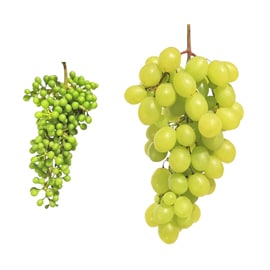Cutting Portions for Better Weight Loss
Supersize, king size, extra value—these are a few of the words that demonstrate how out of control portions are in this country. Restaurants serve up burgers that could feed four, give out unlimited soda refills and add on side dishes with enough calories for an entire meal. We order this food in the name of value, but our waistlines are really the ones paying for it.
Learn to eat healthier portion sizes during your medical weight loss program.
 Supersize, king size, extra value—these are a few of the words that demonstrate how out of control portions are in this country. Restaurants serve up burgers that could feed four, give out unlimited soda refills and add on side dishes with enough calories for an entire meal. We order this food in the name of value, but our waistlines are really the ones paying for it.
Supersize, king size, extra value—these are a few of the words that demonstrate how out of control portions are in this country. Restaurants serve up burgers that could feed four, give out unlimited soda refills and add on side dishes with enough calories for an entire meal. We order this food in the name of value, but our waistlines are really the ones paying for it.
Everyone likes to get the most they can for every dollar they spend, but when it is all broken down you might be shocked by what that value meal is ultimately serving up. Type 2 diabetes, heart disease, hypertension–these are just a few of the obesity-related diseases that have skyrocketed in the past 20 years. As portion sizes have grown, our perception of what it means to eat a healthy diet has undergone some major damage.
Your medical weight loss program gives you a fresh start to reevaluate your portion sizes and think about what it means to follow a healthy diet. Changing the foods that you eat is a huge step to following a healthier diet, but it is only part of the equation. Ultimately, you will have to change the way that you look at food as a whole. This involves altering what you eat, how much you eat, how you interpret your hunger and how often you are eating. Once you understand each of these components you’ll be on your way to a healthier lifestyle.
Learning Better Portions
Portions are largely visual. While some people take the time to measure out their cereal every morning before dumping it in the bowl, others prefer not to look at fractions so early in the morning. Learning basic visual cues can help you follow healthier portion guidelines without the math.
Here are a few visual tricks to help you get started:
- One serving of protein, including chicken, steak, pork or fish, should be the size of your fist. Another way to think of this is to eat meat portions smaller than an iPhone.
- One serving of grains like pasta, rice or your morning cereal should be the size of a clenched fist.
- One slice of bread is as thin and large as a CD case.
- One cup of dried fruit will be the size of a ping-pong ball.
- A cup of milk or yogurt should fit in a standard teacup.
- One serving of nuts should fit in an Altoids box or shot glass.
- One serving of cheese should fit in a matchbox.
- A bagel is the size of a hockey puck.
- A pancake is the size of a DVD.
Once you have visual cues like these in your head, you’ll have a much easier time spotting extra-large portions everywhere you go. To avoid overdoing it on snacks, try not to eat out of the packaging. Most bags or boxes of food will tell you how much constitutes one portion. Serve yourself the correct amount and leave it at that. And always remember to give your stomach time to register your fullness before you continue to eat.




